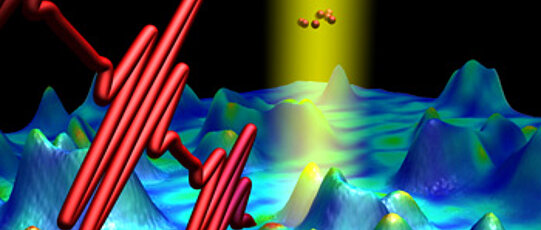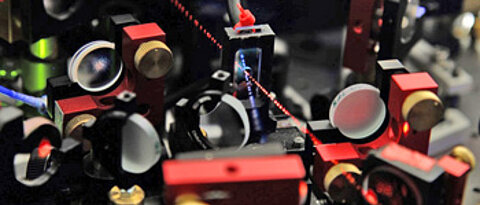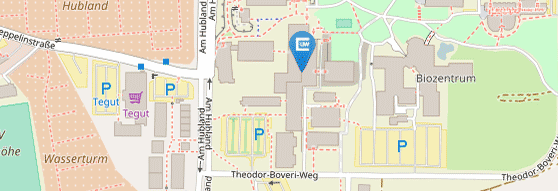Light-Matter Interaction
Molecular materials form the basis for a wide range of optical technological applications, since physical and chemical properties can be varied widely through the structure and composition of the individual molecular building blocks and their arrangement. Examples are optical data storage devices, organic light-emitting diodes, solar cells, fluorescence markers or sensors. The function of such elements depends on which fundamental processes are triggered by the interaction with light as well as on the form, efficiency and selectivity of these processes. Related physicochemical processes also play a crucial role in vital biological phenomena such as photosynthesis or vision.
Our aim is to explore and exploit the connections between structure and function. Remarkably, properties often change fundamentally or only occur at all when individual components assemble to form a larger system. This "emergence" if preperties is crucial for the function of molecular materials and it shapes, for example, charge or energy transport. The research focus "light-matter interaction" is essentially based on three pillars:
- Light as a "reagent" in the production of new materials (photochemistry, photocatalysis, photopolymerization, material processing)
- New materials that fulfill special functions of light-matter interaction (light emitters, sensors, photovoltaics, organic electronics)
- Spectroscopic investigation and control of light-induced phenomena and functions of materials using a wide range of methods (frequency- and time-resolved laser spectroscopy, coherent multidimensional spectroscopy, photoelectron spectroscopy, microscopic methods, quantum control)
We use our preparative, spectroscopic and theoretical expertise in numerous cooperative projects. We study the different hierarchical levels of formation, from individual molecules over larger aggregates to polymers, volume materials and nanostructured systems. Our interdisciplinary approach enables us to better understand fundamental processes of light-induced dynamics and functions of molecular materials, to develop new spectroscopic methods and to produce materials with desired properties. Thus we can meet the increasing requirements and expectations for such methods and systems.





